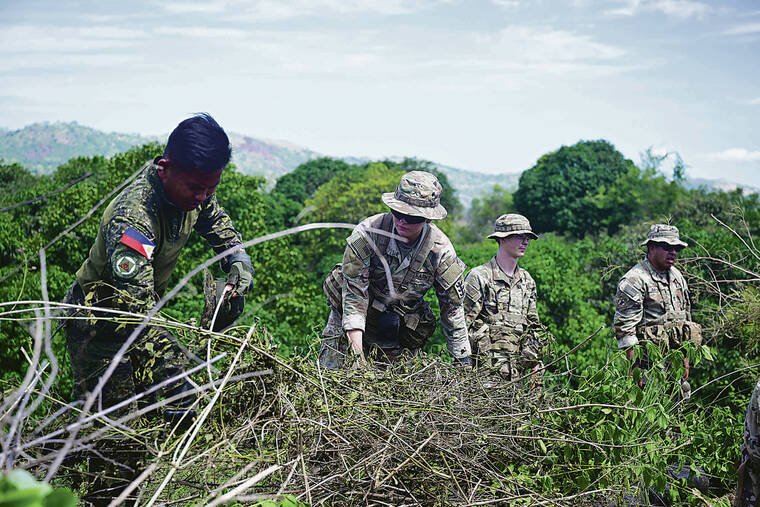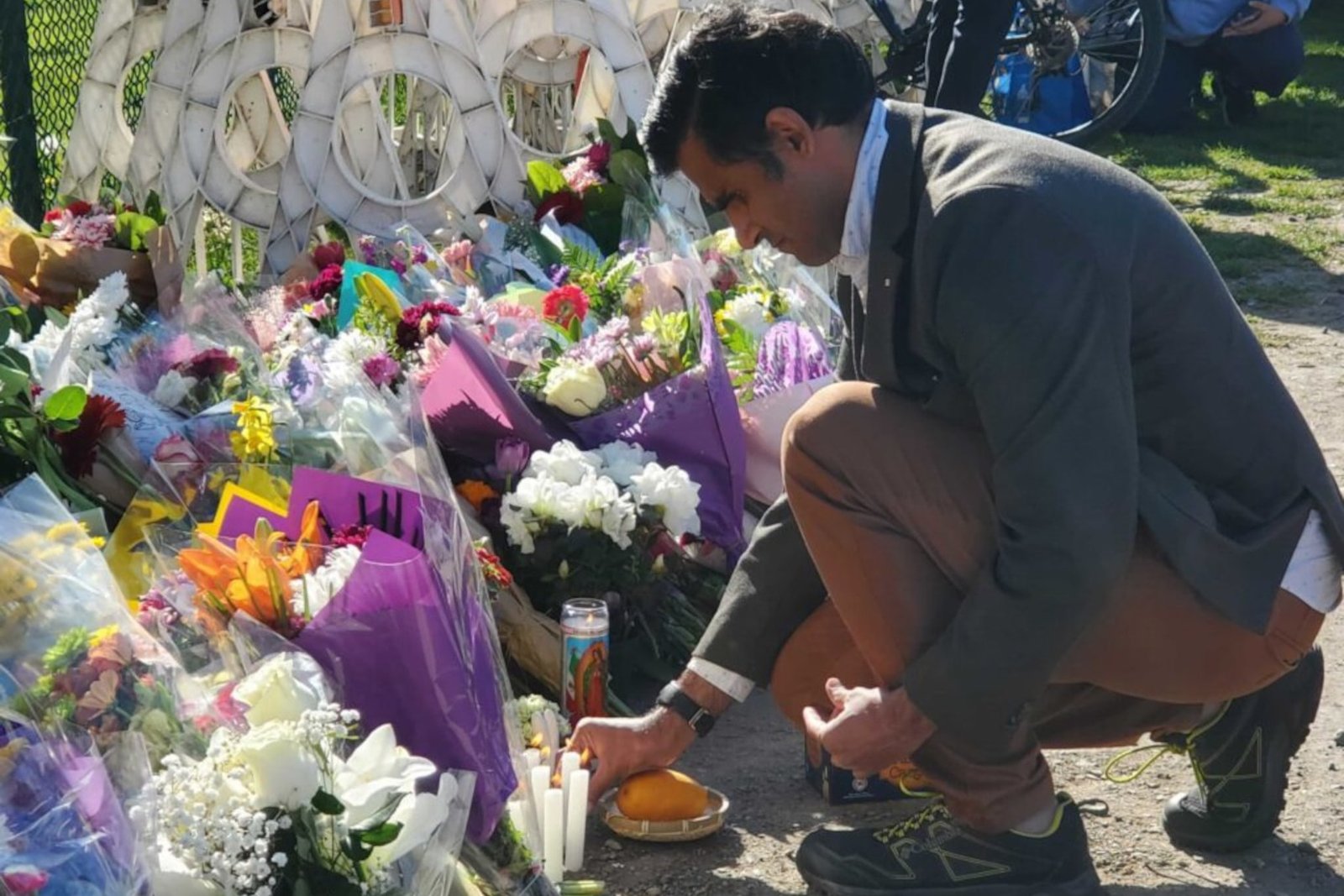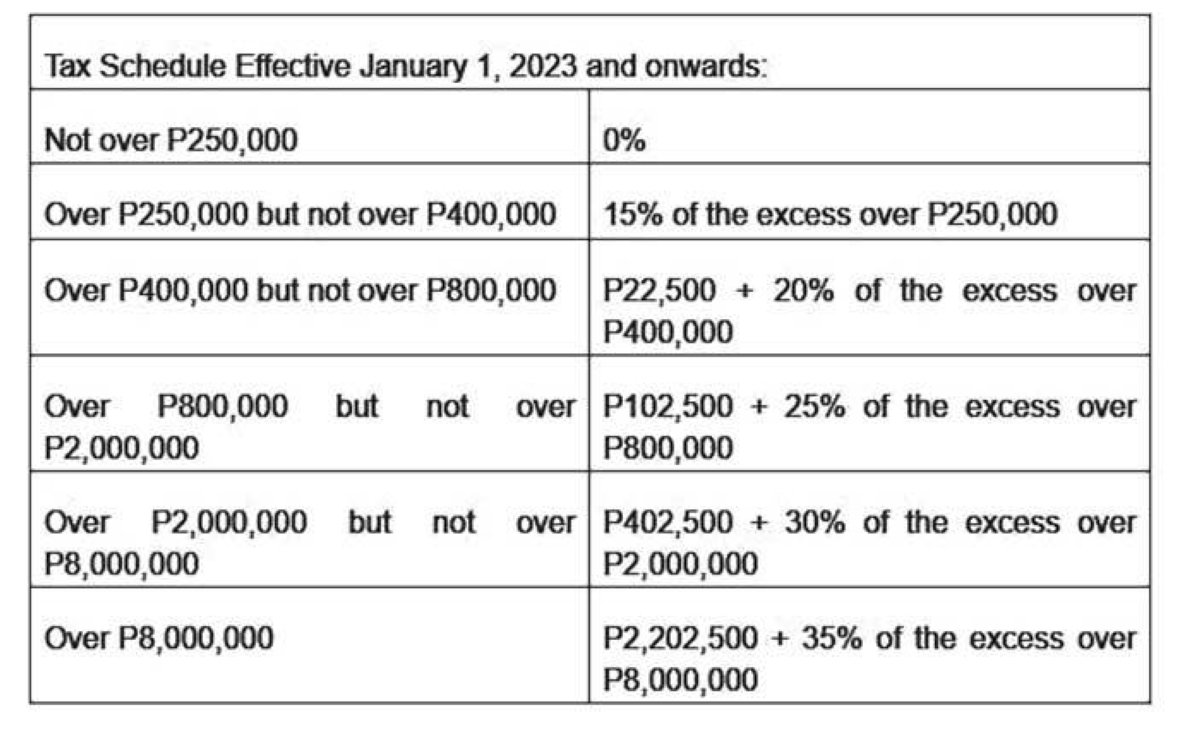As the U.S. military has been ramping up its training in the Philippines, American troops are an increasingly common sight. In April and May, Hawaii-based units participated in the annual Exercise Balikatan, showcasing new weapons and conducting live fire exercises on the western and northern coasts amid tensions with China.
But as international media broadcast the flashy spectacle of missiles firing and jets soaring overhead, behind the scenes members of the Schofield Barracks-based 130th Engineer Brigade have been working on infrastructure and construction projects around Philippine military bases that commanders hope will support future operations for years to come.
Many of the projects have been in close proximity to Philippine military bases that are part of the Enhanced Defense Cooperation Agreement, or EDCA, a pact between the Philippines and the United States that allows the U.S. access to nine Philippine military bases for training and moving troops and equipment to support operations in the Western Pacific.
Even after Balikatan wrapped up, several Hawaii-based units are still on the ground now conducting different exercises.
Maj. Gen. Gavin Gardner, commander of the 8th Theater Sustainment Command at Fort Shafter, told the Honolulu Star-Advertiser that “we want to build facilities, roads, bridges that really are dual purpose. Number one, (our soldiers) assist the host nation with a capability gap that … they can’t get to right now that fills their gap. At the same time, it’s training our soldiers on their go-to-war tasks.”
This year, Hawaii Army engineers worked on a road system near the Philippine military’s Fort Magsaysay as well as a school on the island of Palawan, among other projects. After Balikatan, a group of combat engineers from Schofield arrived for Exercise Salaknib, working with local Philippine forces and learning how each side builds trenches, bunkers and other fighting positions.
Don’t miss out on what’s happening!
Stay in touch with breaking news, as it happens, conveniently in your email inbox. It’s FREE!
“They’re a bunch of motivated guys,” said Sgt. Caleb Monroe, one of the combat engineers. “Once they kind of leave their shell a little, they’re big talkers. (There’s) somewhat of language barrier, but it’s not that big a problem. Most of them speak English, or we attempt to learn some Tagalog.”
“Our Filipino counterparts are incredible to work with,” said Capt. Michael Bruce, commander of the 95th Combat Engineer Company. “Our soldiers are getting great training, and they’re developing lasting relationships with the Filipino soldiers they’re working with.”
The Philippines is a difficult place to work for the Americans. The archipelago is roughly 5,430 miles from Hawaii, and the islands that make it up are large. Moving between different bases and ports can take hours as troops navigate unforgiving terrain — that may or may not have roads — to reach increasingly more austere locations.
Chief Warrant Officer 2 Holly Hughes, a construction engineering technician who worked on the road project, said that on the U.S. mainland and even in Hawaii “if you forget to put something on your bill of materials, you can go to Home Depot, and you can pick it up pretty easily, even if it’s a more specialty item.”
But out in the Philippine jungles and hills, working in baking heat, thick humid air and dealing with deep mud and thick brush, they have to do a lot of improvising. Hughes said that a Philippine Army special forces unit at Fort Magsaysay the American engineers worked with taught them their motto: “maximize the minimum.”
“That truly became kind of our battle cry as we were out there,” she said.
Competing with China
U.S. military commanders have been working to build up facilities in Hawaii and across the Pacific to support operations at a time when the Pentagon increasingly regards the region as its top priority theater as the U.S. and China compete for influence — and access — in countries across the vast ocean.
But logistics — and especially construction — is a major challenge across such a large region.
“The cost of materials alone is usually three times as more expensive as building back on the mainland,” Gardner said. “We are always in articulation of that back to whether it’s members of Congress (or) our own chains of command that says, ‘Hey, if you want to build something forward in the theater, depending on where it’s located at, it’s probably going to cost you.’”
The Philippines, a former American colony, evicted the U.S. military from bases it had kept in the country in the early 1990s after a series of nationalist protests. However, territorial disputes between China and the Philippines have been escalating, which helped pave the way for the EDCA agreement in 2014.
The South China Sea — a busy waterway that nearly one-third of all global trade travels through — has become increasingly militarized over the past decade. Beijing claims nearly the entire sea as its exclusive territory over the objections of neighboring countries, and tensions have been mounting over territorial and navigation rights.
The Chinese military has harassed and sometimes attacked fishermen and other marine workers from neighboring countries — especially the Philippines. In 2016 an international court ruled in favor of the Philippines and found that China’s claims have “no legal” basis. Beijing rejected the ruling and has doubled down by building bases on disputed islands and reefs.
As tensions have escalated, the U.S. and the Philippines in 2023 expanded EDCA from five sites to nine. But though the U.S. military is allowed access to Philippine bases through the EDCA agreement, the bases remain under the control and jurisdiction of the Philippine government.
“What we’re no longer doing is we’re not building any more U.S. bases forward,” said Gardner, who argued the U.S. military has more than enough permanent bases already. “We are building places that we can execute operations, and the best kind of operation is a combined operation — U.S with a partner nation — so that’s what you want to drive towards.”
But EDCA has been controversial. Its expansion in 2023 included sites in the provinces of Cagayan and Isabela, which face Taiwan. Cagayan’s then-Gov. Manuel Mamba told The New York Times he had not been consulted and that allowing U.S. forces into Cagayan would make it “a magnet for a nuclear attack” if a conflict were to break out with China.
Richard Rothschiller of the Hawai‘i Committee for Human Rights in the Philippines, told the Star-Advertiser in a statement that the organization is “alarmed by the accelerating increase in the size of Exercise Balikatan and other military engagements, including the use of Philippine military bases by the U.S. … (American) meddling in the Philippines stands contrary to the aspirations of the peoples of the Philippines and Hawai‘i alike for genuine peace and sovereignty.”
‘Dual purpose’
Gardner said that all projects have been under the close supervision of the Philippine government and that “the intent is to only build capacity that the host nation … in this case, a treaty ally, asks us to do and not make ourselves unwelcome.”
Many have been “dual purpose” projects that support infrastructure in and around strategic sites that support military operations but are also routinely used by local civilian traffic.
“When our engineers go and fix a road and place a culvert where it normally floods so that it doesn’t wash out a road, or build a bridge where there wasn’t a bridge … that serves a military purpose,” Gardner said. “But the military doesn’t use that road every day, and the U.S. certainly don’t use that road every day because we’re not there all the time. It really gives a commercial capability and a domestic capability as well that really improves the quality of lives.”
Hughes worked on a road project outside of Fort Magsaysay. She said that one of her first surprises was learning that import restrictions in the Philippines, especially on plastic products, meant she and her team didn’t have access to material they were used to working with on projects on American bases.
“You kind of have to get creative with how you address those shortcomings,” she said. “Like we didn’t have rebar caps for the majority of the time that we had our project. So (we are) being a little bit more conscious of how we’re addressing those safety concerns and coming up with more expedient methods to make sure that we’re keeping everybody on the jobsite safe.”
The Schofield-based engineers ultimately brought little equipment of their own from Hawaii and almost all the material and equipment used came from local Philippine companies and contractors. Hughes said that it was an adjustment.
“Equipment in the Philippines in general just tends to be smaller than what we’re used to here,” she explained. “So you have to factor that into your planning timeline. Things are going to take a little bit longer. You’re maybe not going to get the same result that you would expect in the U.S.”
Gardner said that while that poses challenges, there are also advantages to working with local government and businesses. For one, it’s cheaper than hauling material across the ocean.
He also argued that “where you can use host nation capability, whether it’s engineering, skilled labor and workforce or even partner nations’ militaries, to build something together or to give them the capacity to you design it — you build it, we’ll help fund it — that I think really incentivizes nations out here to participate with us. Because we’re basically infusing economic growth back into their own economies and we’re not bringing in all of our own labor, all of our own management.”
‘Middle ground’
Ultimately, plans drawn up in offices sometimes have to be adjusted to the realities in the field. Hughes said that Philippine military engineers and contractors had to teach her team about the nuances of the local terrain as well as the locally obtained materials — notably the wood products they worked with was very different from what the Americans were used to.
She said that “I was consistently impressed with how quickly they just adapt to something that we would maybe take a little bit longer to do some analysis, and kind of do the staff work that the (U.S.) Army likes to do, but they’re more, like, just meet it head on. And I think it was interesting to see there’s a time and a place for both.”
While Hughes said she was awestruck by the work ethic of her Filipino counterparts and their ability to improvise on the spot as they worked together on difficult terrain on hot days, their gung-ho approach sometimes backfired. She said “we did a road with one of their combat engineer regiments, and they kind of charged out and just started doing stuff, and then had to come back and, like, redo stuff. So we had some conversations between us and them about construction planning.”
She said that both sides learned that “we kind of had to come to sort of a middle ground between they want to get stuff done, we want to plan.”
When it comes to planning, a major part was also crafting maintenance plans for projects to ensure that they will endure after the Americans pack up and leave. During the project, Hughes said they had a constant audience as members of local communities watched them work, from town elders to local youth.
“Being able to kind of add to the community was definitely rewarding, and something that you don’t always get military projects,” Hughes said. “Even during construction we had local kids that were just interested in what we were doing (and) wanted to see what was going on. They liked all the big equipment, obviously … They would follow us around the jobsite. Our surveyors had, like a pack of three or four, that would just kind of follow them around while they were doing their survey.”
During lunch breaks, Hughes said that community members regularly sold or gifted them local meals and that soldiers shared Army-issued rations with local kids. She said on one occasion a local group of children “tricked” some of her soldiers to eat siling labuyo — a small and notoriously intense local hot pepper.
In addition to roads and bridges that will support both military and civilian traffic, during Balikatan this year service members also worked on schools and health clinics around the Philippines with less obvious military applications. But Gardner said that ultimately each project “builds partner capacity at the same time as building readiness for us. … The requisite skill sets to plan, prepare and execute that construction project remain the same, and that’s about building a skill set that enables the joint force to be lethal.”
———
Freelance photographer Edward Bungubung contributed to this article











